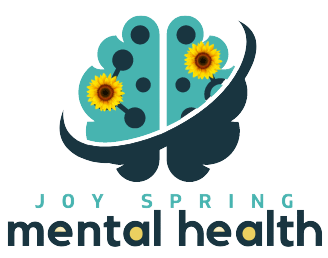You’re welcome, that song is now stuck in your head.
When you become a mom, in a lot of ways, you lose autonomy over your body. If you think this loss of control will spontaneously resolve once the baby is born, you are going to be in for a rude wake-up (literally). But don’t we all?
I know I packed actual snacks in my bag.
I’m kidding. I didn’t have a bag. I had complications and early deliveries and had someone bring me my bag (packed after the fact). But in the packing list, you can bet your sweet cheeks I included snacks. I couldn’t wait to be free of gestational diabetes and eat whatever I wanted…oh the dreams.
I’m serious. I dreamed of food throughout all my pregnancies once I was diagnosed with gestational diabetes. Auntie Annies should have had me in their commercials.
Usually an optimist, I didn’t bother with mourning this loss of autonomy. I was certain there was nothing to mourn. I would deliver, the diabetes would vanish, the pitting edema would trickle away (pun intended), and the varicose veins would…I don’t know, but not stay forever.
If you’ve had your baby, you know. This is not at all how it played out. If you haven’t yet had your baby and I am bursting your bubble, don’t worry, I’ve got you.
The reality looked a little more like this:
The diabetes resolved but I was now reminded that I would always be at increased risk and this risk would increase as I aged (nothing like parenthood to kick you into adulthood).
The edema did trickle away, but it was just that..a trickle. Even with night sweats and frequent urination, it took weeks before I was back to ankles instead of cankles (TMI?).
The varicose veins are for life.
But the challenge from those changes had nothing on the loss of the ability to independently control what happened externally to my body and my environment. Kids come with a lot of STUFF. And their stuff can be…a lot.
On top of that, they come with noise, smells, and a complete lack of understanding of personal space. (Are you picturing me as the Grinch)?
When you get hooked on the sensory overload, the result is often anxiety and irritability.
Totally naturally, not necessarily tolerable.
Here’s what to do….wait for it….wait for it….LEAN IN!
I know, you thought I was going to say “avoid” and “make it stop”. Who’s dreaming now?
Here’s what happens (nerd alert!). Our neurological system is comprised of central nervous system and peripheral nervous system components that rely on and regulate sensory input from the visual (seeing), auditory (hearing), olfactory (smelling), gustatory (taste), tactile (touching), vestibular (balance and coordination), proprioception (arousal and awareness of own body’s position and location in space), and interoception (awareness of internal body sensations-hunger, temperature, pain, emotions, etc) systems.
This is a complex system of systems.
When you add a baby or children to the environment, the sensory processing input for a new mom increases EXPONENTIALLY. Usually, mom is too busy to notice, and if she isn’t an occupational therapist, she probably doesn’t even remember that she has more than 5 senses. She’s probably been letting them run on autopilot and has been taking them for granted.
You’ve got 3 approaches available and they all involve LEANING IN to mindfulness.
- Tune in and notice the environment around you, particularly giving attention to the sensations you are experiencing physically. This is an option available to everyone. When you notice that something in your environment seems to be “rubbing you wrong” (get it?!), turn it down or up accordingly. To turn up, you will use actions of stimulation (movement, soft touch, louder volume, cool temperatures, etc). To turn down, you will use actions of relaxation (breathing, palpation-deep pressure, heavy lifting, warm temperatures, etc).
How do you know if you need to turn up or turn down your environment? Thanks for
asking! You are going to LEAN IN to mindfulness and find your threshold. Notice the
trend?
- Tune in and notice the internal sensations in your body, particularly giving attention to the areas of calm, quiet, comfort, and relaxation. Once you locate this area in your body, give yourself time to focus in-a few minutes is probably enough but you may want to revisit this location with intention and attention several times daily. This option is great for people who have a history of trauma or struggle with feeling safe in their body.
- Tune in and notice the internal sensations in your body, particularly giving attention to the tension, pain, unease, or discomfort. I recommend working in a systematic way from head to toe or toe to head. Use your breath, touch, or relaxation/softening as go to relieve the activation you find. This option doesn’t always feel safe for people who have experienced trauma and if it is too much for you, be sure to seek professional help.
Remember, MINDFULNESS isn’t about judgment. What you notice is neither right nor wrong. Be curious, consider this practice an experiment and have fun.
Now is when the magic happens. By using mindfulness, you can identify what is disrupted in your sensory world and start taking back some of that missing autonomy. YOU CAN UNHOOK FROM THE FEELING and let your thinking brain have more control. Rather than reacting with irritability and anxiety, you can take a breath, adjust your settings, and move forward. Your nervous system will thank you.
Now, if that song is still playing in your head, be sure to check out my next blog post about getting stuck on a THOUGHT.


